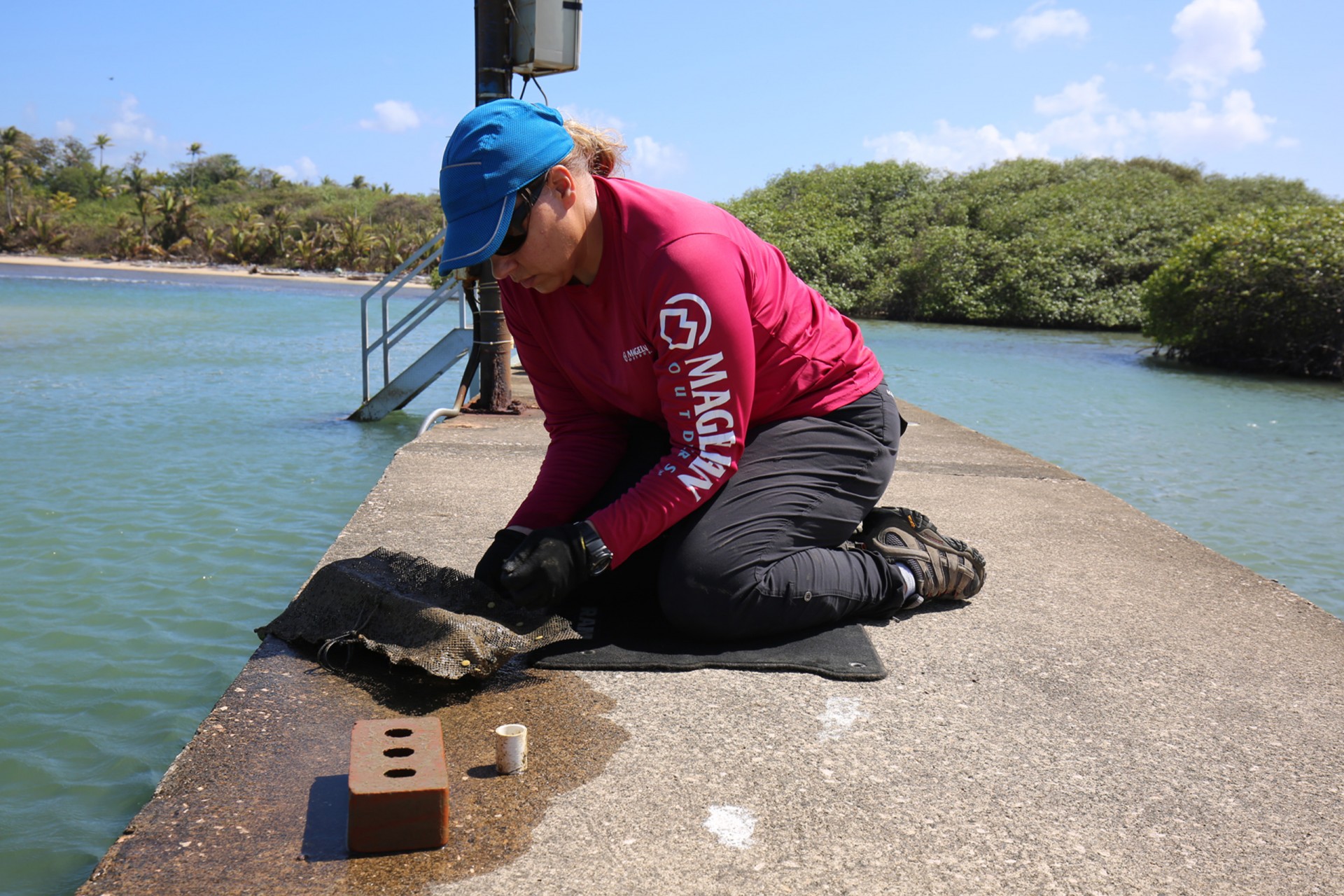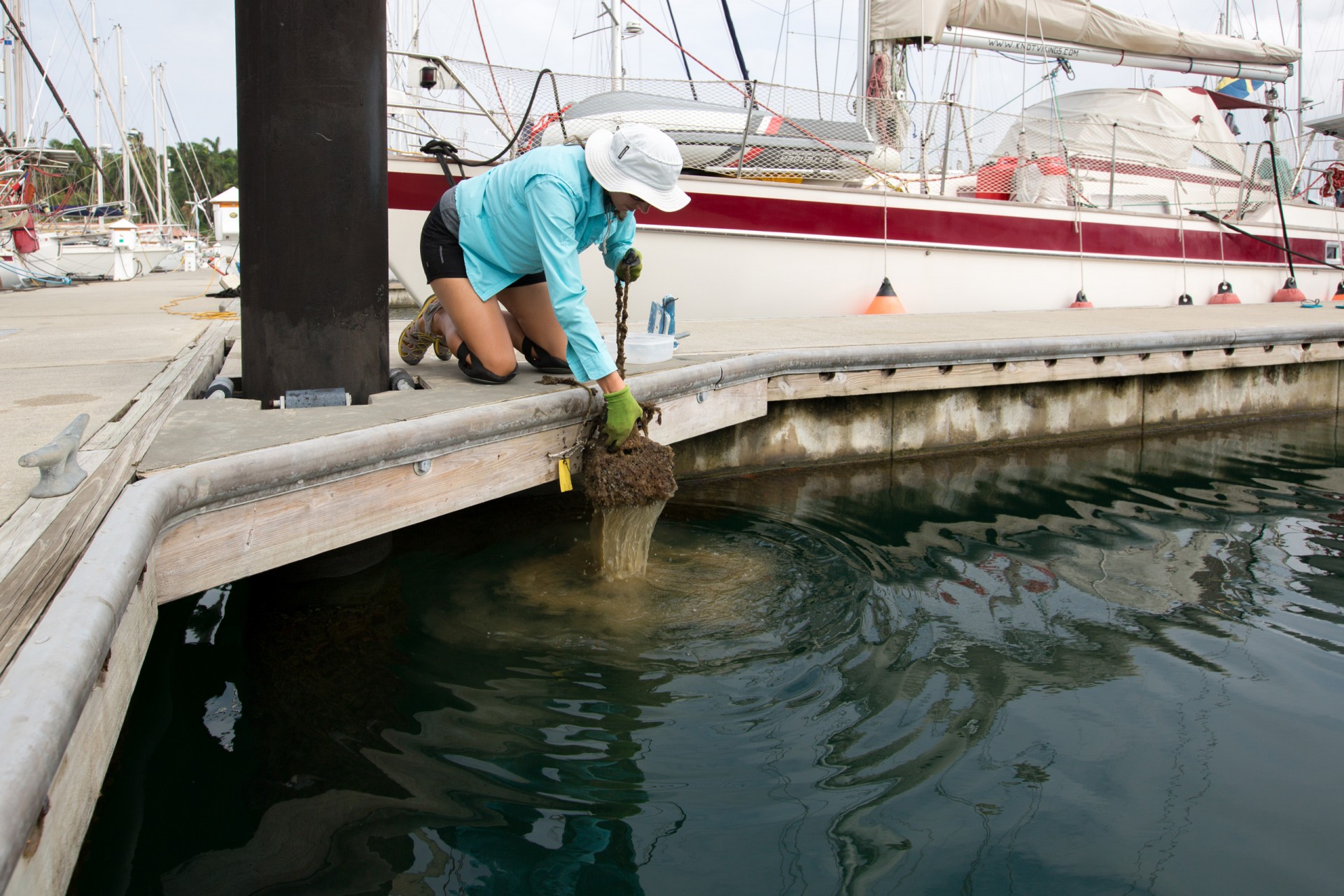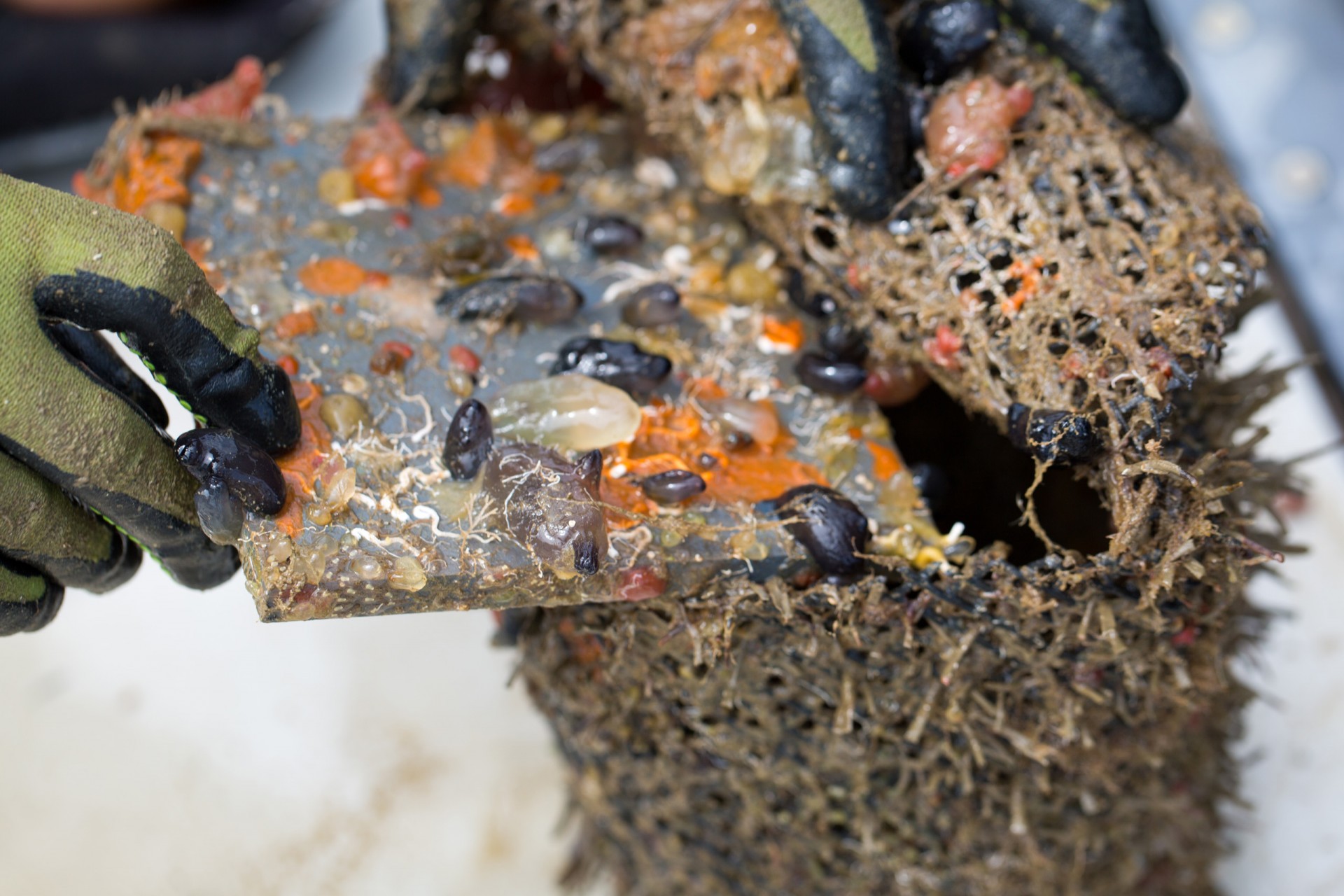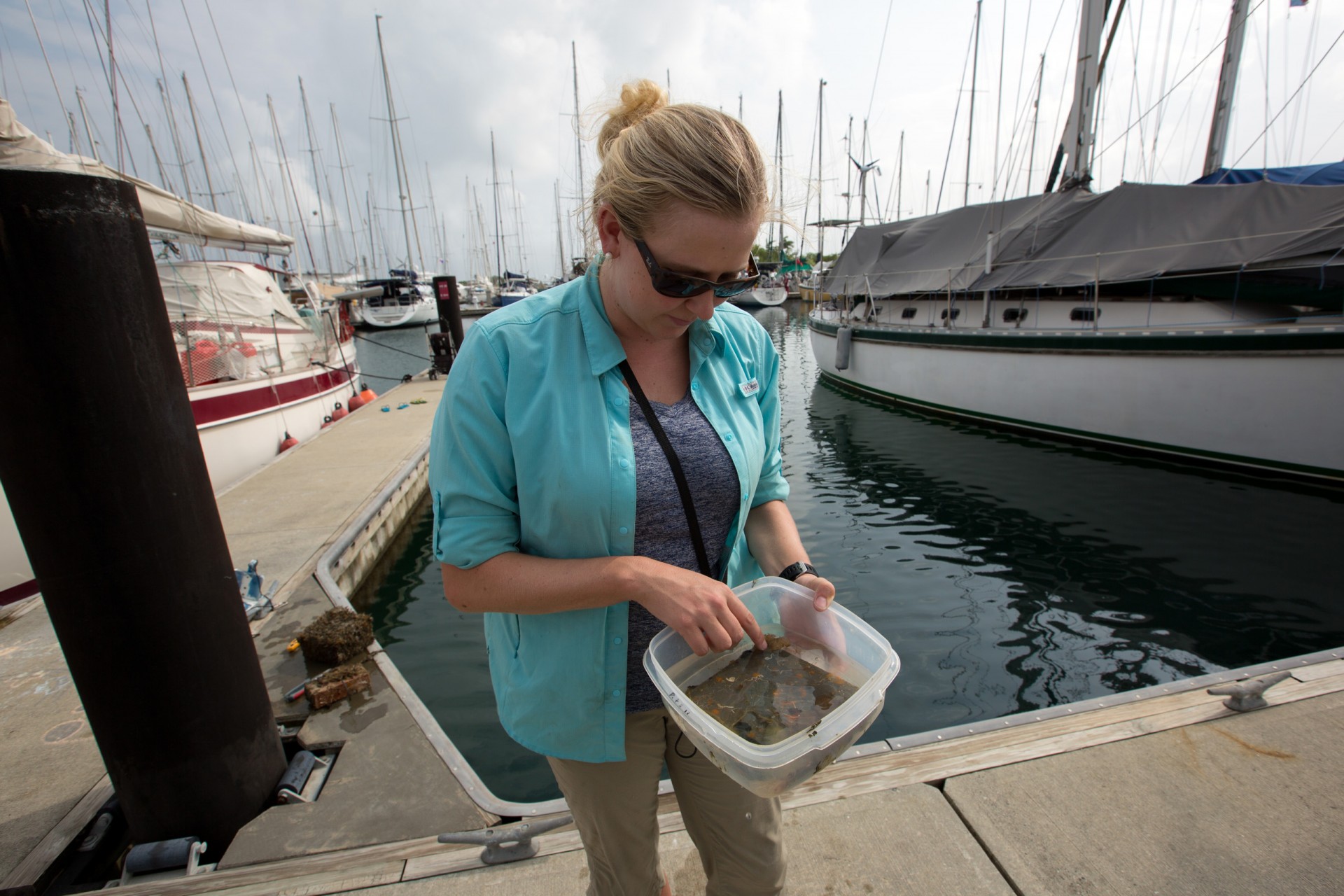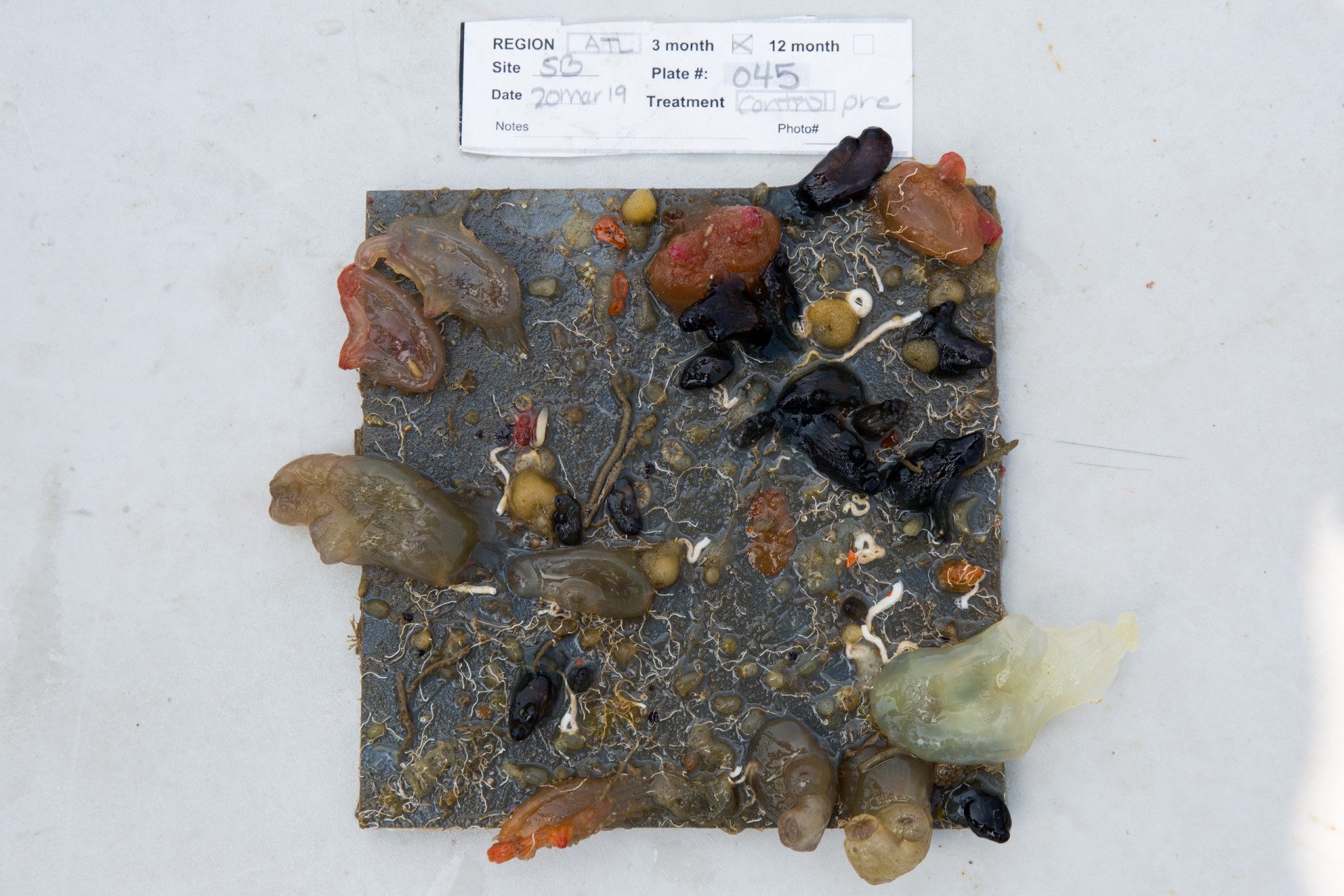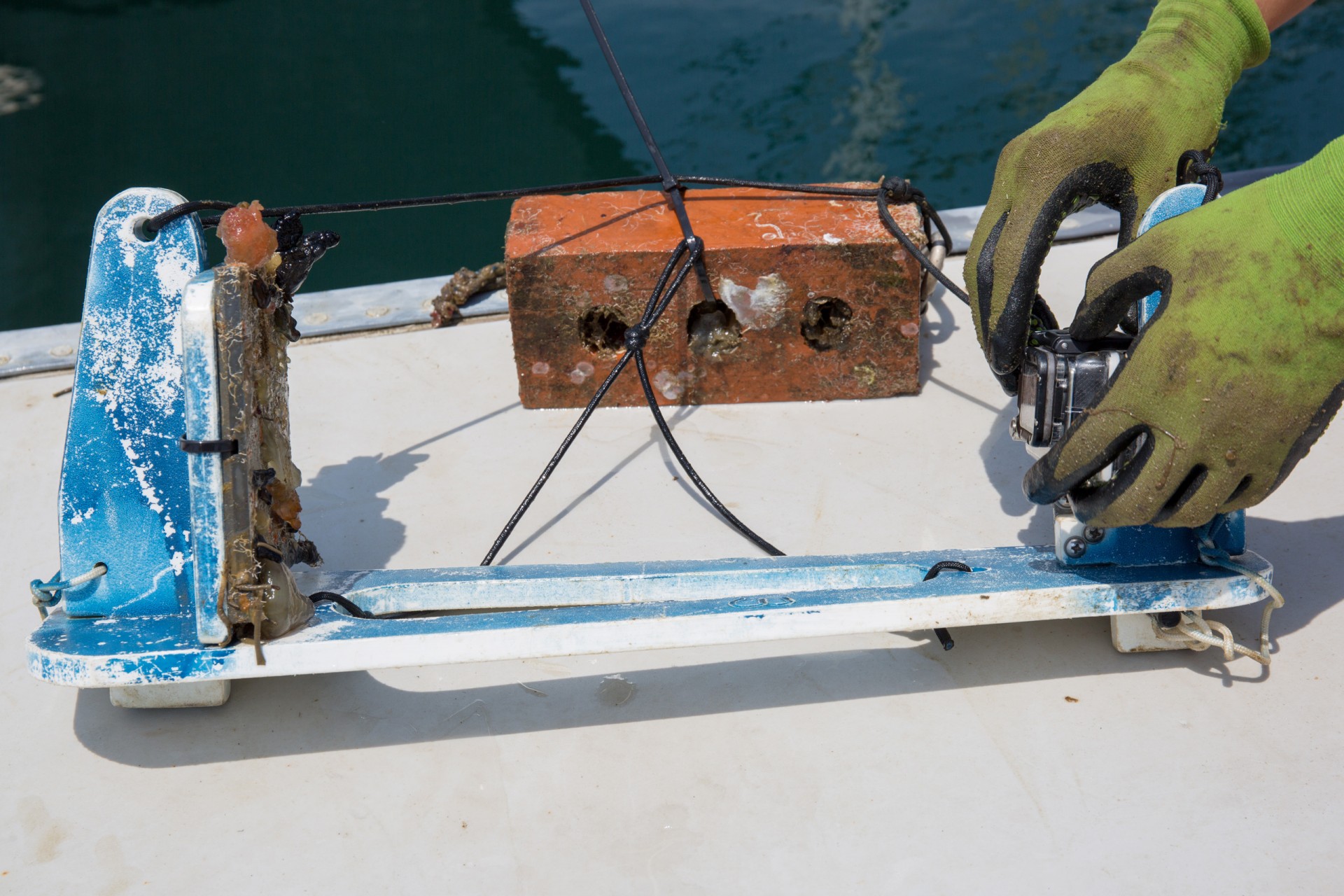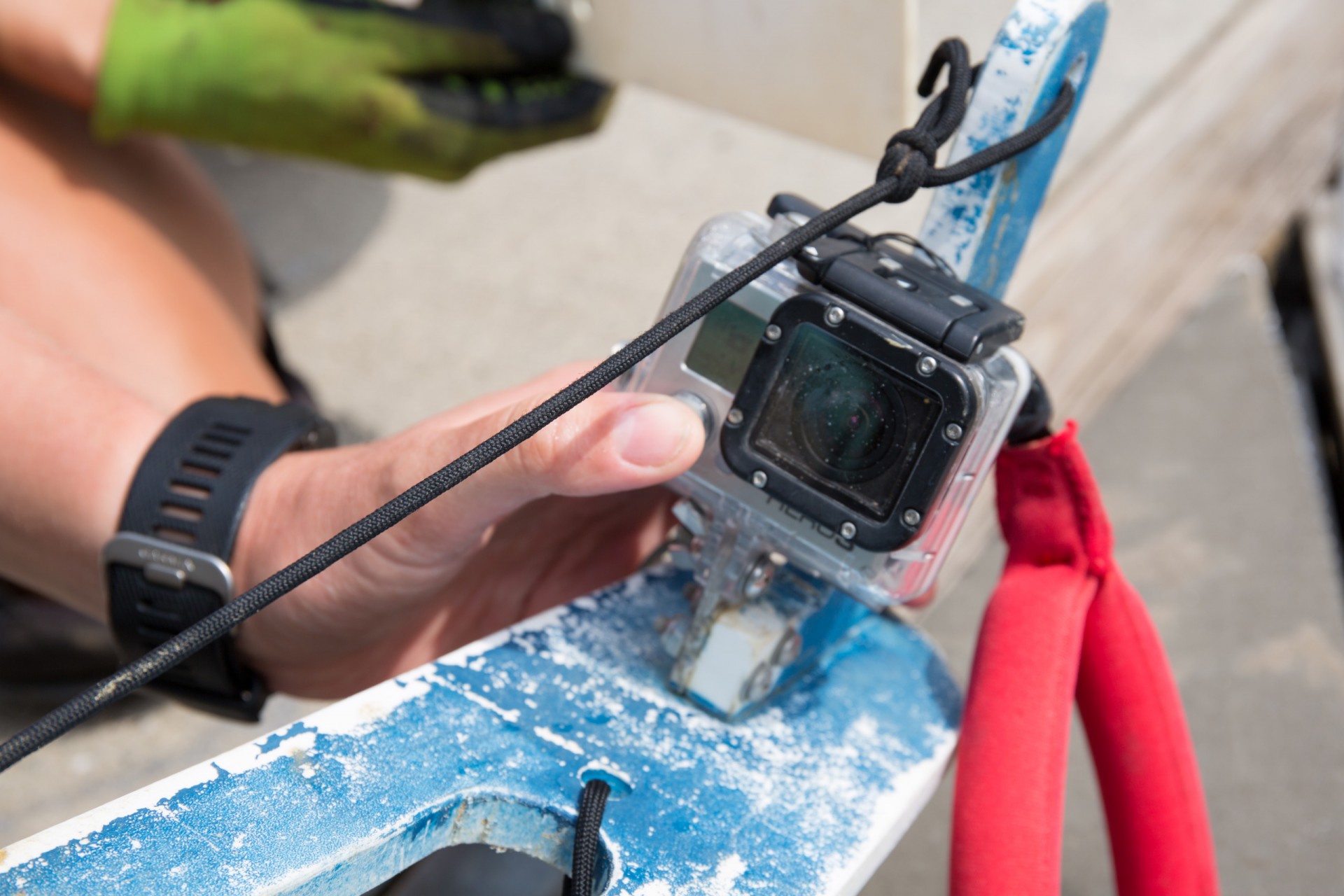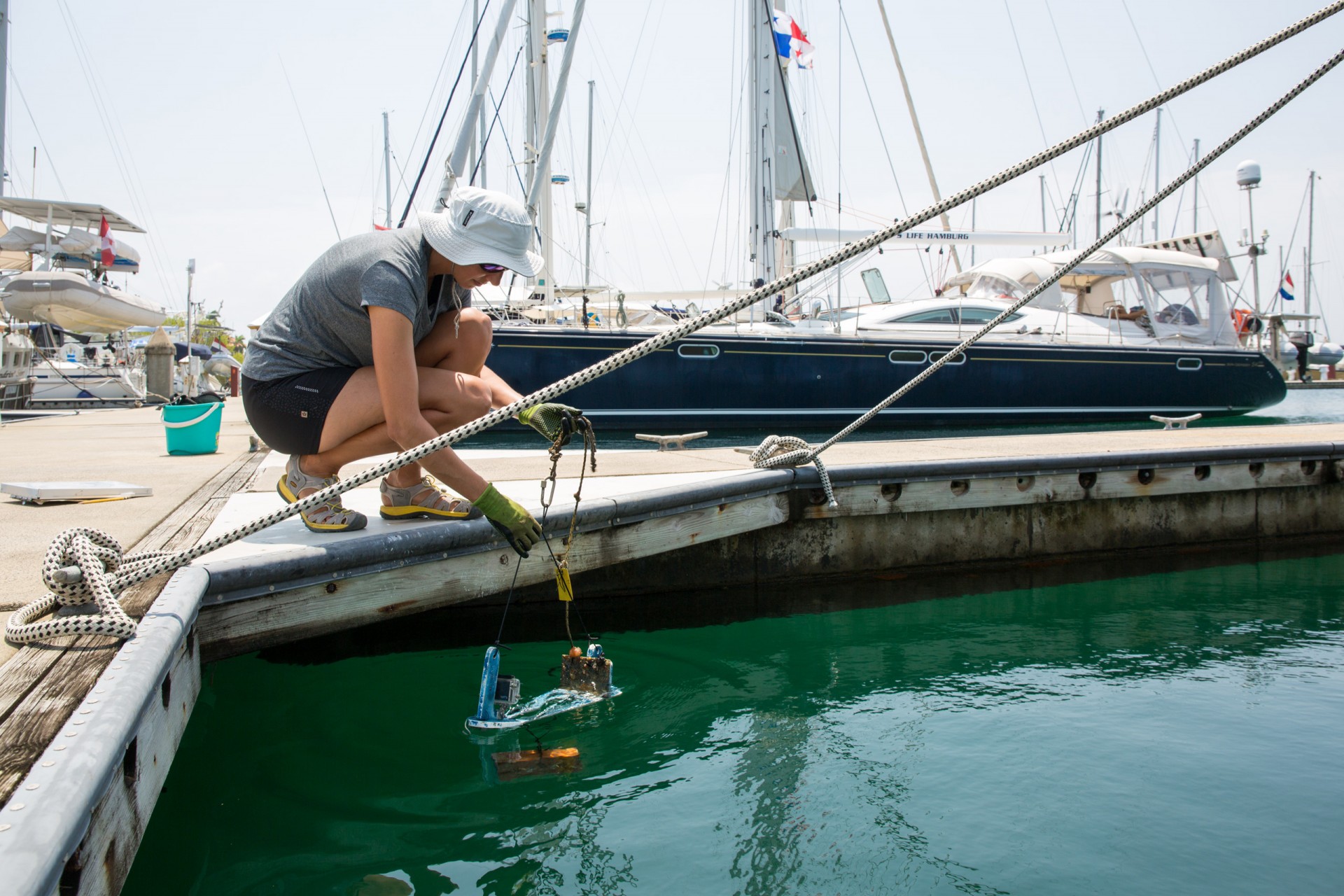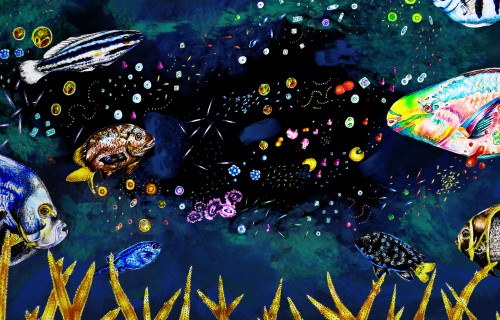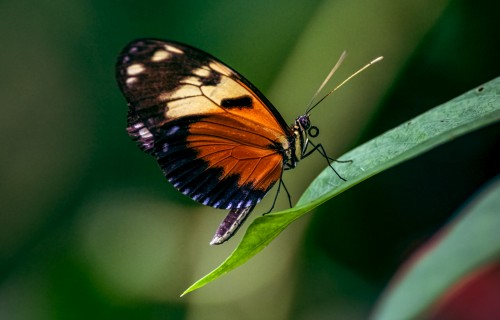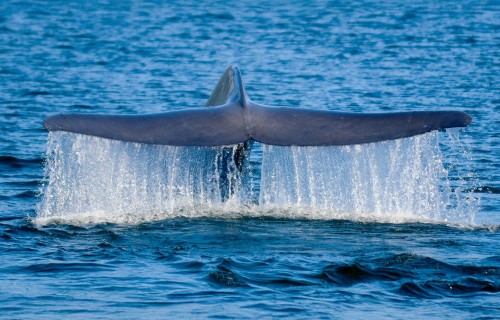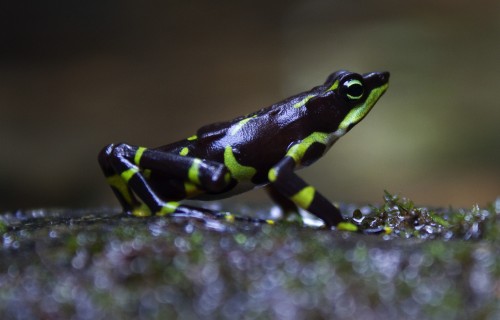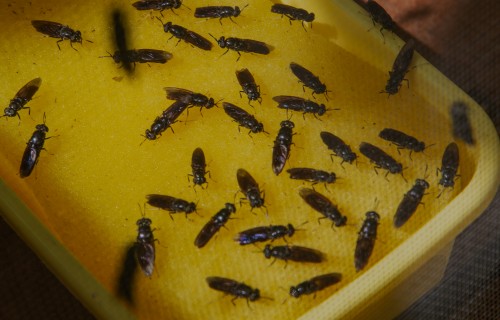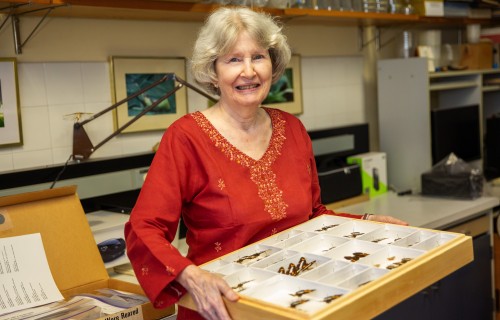Smithsonian science helps understand blue whale migratory and foraging patterns to inform conservation strategies
Exploring
the unwanted
The positive side
of fouling communities
Colón
Text by Leila Nilipour
Video and Photos by Ana Endara
Encrusting organisms may be disliked by most people, but they’re helping explore marine conservation and biodiversity concerns
Nobody likes fouling communities. Their sole name associates them to filth or pollution. They can also be smelly and display unattractive grey and brown colors. But they’re disliked mainly because of the inconvenient places where they choose to settle, such as the sides of docks or marinas, the bottoms of boats. Yet these encrusting organisms are extremely important: they provide a nursery habitat for fish and crabs, they help clean the water and represent a food source for many species.
For Smithsonian MarineGeo postdoctoral fellow, Holly Sweat, and for Smithsonian Tropical Research Institute (STRI) fellow and doctoral student at Temple University, Michele Repetto, they’re fascinating for different reasons. Holly wants to understand what types of microbes are responsible for the development of these communities. Michele hopes to determine patterns of predation on fouling communities and their impact on biodiversity.
Holly, a native Kentuckian whose first memory of the ocean in Florida led her to move there for college and become a marine biologist, got interested in fouling communities after an asian green mussel invasion in Tampa Bay. Later, as an aquarist at the Smithsonian Marine Station in Fort Pierce, she started noticing the influence of smaller organisms, microbes, on ecosystems, and fell in love with them. As a graduate student, she wondered whether one community impacted the other.
She used Smithsonian facilities in Panama and Fort Pierce, as well as in Virginia, near the Smithsonian Environmental Research Center (SERC), to approach this question. Her research sites, marinas or docks located in the same ocean, but at different latitudes, allowed her to explore how microbes interact with fouling communities across diverse marine habitats.
In the Caribbean coast of Colon in Panama, she submerged plastic panels in the water and observed what grew on them over a month. Some were immersed in a port area, where the water quality is lower and the boat traffic contributes to the arrival of all sorts of larval species. Others, in the water at STRI’s marine laboratory in Punta Galeta, where the mangrove forest, seagrass beds and corals lead to clearer waters, with less nutrients. The waves near the Galeta coast also flush the larvae around, making it harder for them to attach to the panels and grow.
Holly Sweat examined the diversity of fouling organisms that attached to her panels, but also the microbe communities associated with them. These relationships offer crucial insight into how microbial organisms influence where different marine communities develop.
Aside from noting which species of fouling organisms grew on her panels, Holly examined the diversity of the microbe communities associated with them. Although invisible, these microbes play essential roles in the ocean: helping cycle nutrients, getting rid of pollution, and feeding larger organisms. By sending out chemical cues into the water column, they also have a big influence over where marine organisms grow. These cues can be ‘smelled’ by the larvae and may attract or discourage them from settling on a particular place.
In the long run, understanding the associations between specific microbes and the different marine and coastal habitats that they help engineer, could be highly advantageous for conservation purposes.
“If we want to create an artificial reef, knowing what microbes are responsible for attracting corals is very beneficial,” Holly says. “If we want to clean an area, knowing what microbes may get rid of pollution, is essential. Microbes are probably the largest component of diversity in ecosystems, but we still don’t know how diverse they are and where they’re located.”
Michele Repetto also explored the diversity of fouling communities in Panamanian waters, but in relation to predation. She used the same plastic panels as Holly, but placed them inside cages and submerged them in marinas along both the Pacific and Atlantic oceans. Larval organisms in the water would be small enough to enter the cages and grow on the panels, while keeping predators at bay.
After three months, Michele measured the amount and diversity of organisms that had grown on the panels, before returning them to the ocean. This time, without the cage, and hooked up to a video camera.
Unprotected, the encrusting species became an easy target for hungry fish. The video footage allowed Michele to identify the main fish predators approaching the panel, the organisms they preferred to eat and how much they actually ate.
“Some encrusting species had never been found in the Pacific until a cage was put around the panels, which gave us the first clues that predators are limiting the growth and abundance of particular species,” Michele explains.
These experiments –which branched out from a larger project called BioVision, studying species interactions along the Pacific coastline from Alaska to Panama–, have allowed Michele to begin understanding the dynamics of predator-prey interactions in the tropics. Her observations may begin to explain some of the biodiversity patterns we see on Earth, including the higher diversity characterizing tropical waters.
“We found that predation intensity (on fouling communities) can vary greatly both between and within the Pacific and Atlantic coasts of Panama. Much of the variation seems to be influenced by the local community of fish predators,” she says. “It’s important to understand the interactions between fish and fouling organisms in order to predict how these relationships may be altered by human impacts to coastal environments.”

